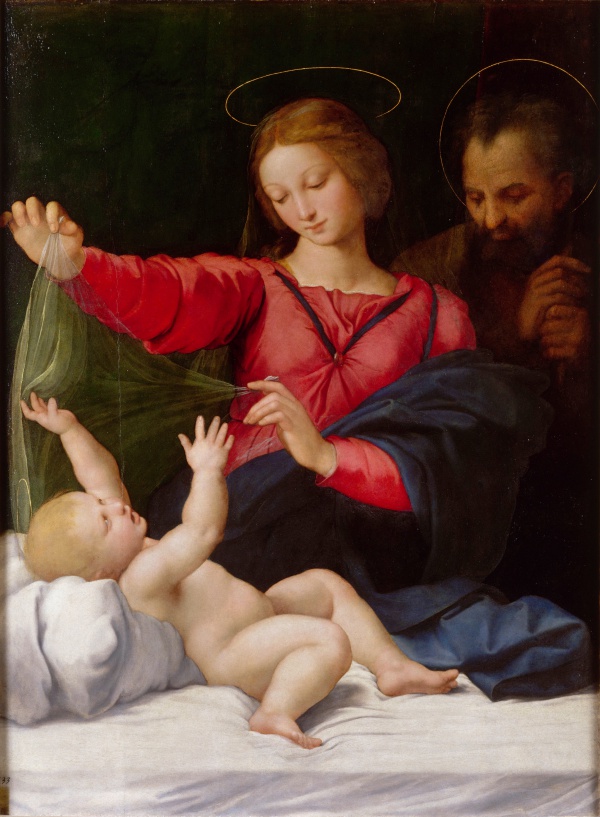Facts About Madonna of Loreto
Raphael's "Madonna of Loreto" painted around 1511, epitomizes Italian High Renaissance art. Today, this exquisite work resides in the Musée Condé in Chantilly, France. The painting's history is captivating; it was once associated with Raphael's portrait of Pope Julius II and has traversed various locations over the centuries.
The composition depicts a tender moment where the Christ Child playfully tugs at the Madonna's veil, while Saint Joseph observes from the background. The veil itself is rich with symbolic significance, adding depth to the narrative. Interestingly, X-ray examinations have revealed that Saint Joseph was initially painted over a window, corresponding with Raphael's early sketches for the piece.
Throughout its history, the painting has been referred to by different names, reflecting its journey and origins. Experts affirm that the version now housed in Chantilly, France, is the original masterpiece—a conclusion supported by historical documentation and meticulous analysis.
The painting's provenance is remarkable. It was first commissioned by Pope Julius II, then passed through the hands of Cardinal Sfondrati and Cardinal Borghese. In 1979, it was rediscovered in Chantilly and credited to Raphael, thanks to its exceptional quality and the unique details unveiled through X-ray examination.
Adding another layer to its rich history, a copy of the painting was donated to the sanctuary of Loreto, further complicating its narrative. Over the years, the "Madonna of Loreto" has inspired numerous engravings and lithographs, a testament to its enduring appeal and influence.

 Andorra
Andorra